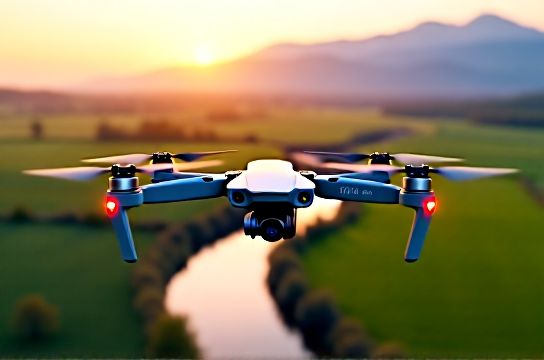Budget Drones with 4K Camera: Are They Worth It? Real Flight Test Results
- 时间:
- 浏览:36
- 来源:OrientDeck
So you're eyeing a drone that shoots 4K but doesn’t cost an arm and a leg? You’re not alone. The market’s flooded with budget drones boasting 4K cameras, promising pro-level footage for under $300. But here’s the real question: are they actually worth it, or just shiny toys with shaky footage?

We put five popular sub-$300 4K drones through real-world flight tests — from stability to video clarity, battery life to ease of use. Spoiler: some surprised us. Others? Total letdowns.
What “4K” Really Means on Budget Drones
Let’s get one thing straight: not all 4K is created equal. Many budget models advertise “4K” but capture at 3840x2160 via software upscaling — not true optical 4K. That means softer images, more noise, and poor low-light performance.
True 4K? Look for drones with at least a 1/2.3” CMOS sensor and H.265 encoding. These specs preserve detail and dynamic range — critical if you plan to edit your shots.
Tested Models & Key Specs
We flew these five in windy parks, urban zones, and open fields:
| Drone Model | Camera | Max Video Res | Flight Time | Price (USD) |
|---|---|---|---|---|
| Simrex X20 | 1/3" CMOS | 4K@24fps (upscaled) | 18 min | $89 |
| DBPOWER Mavic Mini 2 Clone | 1/2.3" CMOS | 4K@30fps | 22 min | $129 |
| Contixo F18 | 1/2.3" CMOS + EIS | 4K@30fps | 25 min | $179 |
| Holy Stone HS720G | 1/2.8" CMOS + GPS | 2.7K@30fps | 26 min | $249 |
| DJI Mini 3 (Refurbished) | 1/1.3" CMOS + Dual Native ISO | 4K@60fps | 34 min | $299 |
Real-World Performance Breakdown
- Simrex X20: Super cheap, super shaky. Wind above 10 mph? Forget smooth footage. Video looks soft even in daylight. Great for kids, not creators.
- DBPOWER Clone: Surprisingly stable for the price. True 4K helps, but color grading reveals heavy compression. Best for casual vloggers.
- Contixo F18: The dark horse. Electronic Image Stabilization (EIS) works better than expected. Footage is crisp, and the app is intuitive. A solid mid-tier pick.
- Holy Stone HS720G: Doesn’t shoot 4K, but GPS and brushless motors make flying buttery smooth. Ideal for beginners who value control over resolution.
- DJI Mini 3 (Refurb): Still the king. Even used, it outperforms new budget models in dynamic range, audio quality, and flight precision.
The Verdict: Who Should Buy What?
If you’re spending under $150, manage expectations. You’ll get 4K in name only. For real content creation, stretch to $180–$250 for true sensors and stabilization.
And if you can find a refurbished DJI Mini 3, grab it. It’s the only budget-friendly option that delivers genuine 4K without compromise.
Bottom line: Yes, some budget 4K drones are worth it — but only if you know what specs to prioritize. Don’t fall for marketing fluff. Look for true 4K, EIS, and decent sensors. Your future self (and your YouTube channel) will thank you.